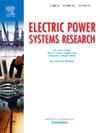结合实时热成像和数值继电器协调的混合式变压器过载保护方案
IF 4.2
3区 工程技术
Q2 ENGINEERING, ELECTRICAL & ELECTRONIC
引用次数: 0
摘要
变压器热过载是电力系统可靠性的主要威胁,它会导致绝缘性能下降、使用寿命缩短和意外停机。使用数字继电器的传统过载保护,如GE Multilin D60,主要依赖于基于电流的IEC 255-8热模型,不能直接监测实时温度条件,可能会延迟故障检测。本研究提出了一种以实时热成像作为主要决策标准,D60数字继电器作为备用过流保护装置的混合保护方案。使用FLIR E63900红外相机测量表面温度,并使用基于python的图像处理模块与OpenCV和Tesseract OCR从热图像中提取温度值。这些都是通过传热模型来估计内部核心温度。混合保护决策控制器(HPDC)通过Modbus TCP接收热和电流数据,如果超过热阈值或备用继电器检测到过电流,则发出跳闸信号。当温度异常时,会立即触发本地警报,所有事件都会记录到SCADA/EnerVista中进行诊断。在不同负载条件下对3kva单相变压器进行的实验验证表明,与仅继电器保护相比,可以更快地检测过载条件,实现主动隔离并降低绝缘故障的风险。由于包括热成像硬件和先进的数据处理系统,拟议方案的执行费用比传统的纯中继解决方案高;然而,对于关键的变压器来说,它仍然是一项合理的投资,因为故障的潜在后果大大超过了额外的支出。本文章由计算机程序翻译,如有差异,请以英文原文为准。
Hybrid transformer overload protection scheme integrating real-time thermal imaging and numerical relay coordination
Transformer thermal overload is a major threat to power system reliability, leading to insulation degradation, reduced service life, and unplanned outages. Conventional overload protection using numerical relays, such as the GE Multilin D60, relies primarily on current-based IEC 255–8 thermal models, which cannot directly monitor real-time temperature conditions and may delay fault detection. This study proposes a hybrid protection scheme in which real-time thermal imaging is used as the primary decision criterion, while the D60 numerical relay functions as a back-up overcurrent protection device. Surface temperature is measured using a FLIR E63900 infrared camera, and a Python-based image processing module with OpenCV and Tesseract OCR extracts temperature values from thermal images. These are processed through a heat transfer model to estimate internal core temperature. A Hybrid Protection Decision Controller (HPDC) receives both thermal and current data via Modbus TCP and issues a trip signal if either the thermal threshold is exceeded or the back-up relay detects overcurrent. Local alarms are triggered immediately upon thermal violations, and all events are logged to SCADA/EnerVista for diagnostics. Experimental validation on a 3 kVA single-phase transformer under varying load conditions demonstrated faster detection of overload conditions compared to relay-only protection, enabling proactive isolation and reducing the risk of insulation failure. The proposed scheme entails higher implementation costs than conventional relay-only solutions owing to the inclusion of thermal imaging hardware and advanced data processing systems; however, it remains a justified investment for critical transformers where the potential consequences of failure significantly outweigh the additional expenditure.
求助全文
通过发布文献求助,成功后即可免费获取论文全文。
去求助
来源期刊

Electric Power Systems Research
工程技术-工程:电子与电气
CiteScore
7.50
自引率
17.90%
发文量
963
审稿时长
3.8 months
期刊介绍:
Electric Power Systems Research is an international medium for the publication of original papers concerned with the generation, transmission, distribution and utilization of electrical energy. The journal aims at presenting important results of work in this field, whether in the form of applied research, development of new procedures or components, orginal application of existing knowledge or new designapproaches. The scope of Electric Power Systems Research is broad, encompassing all aspects of electric power systems. The following list of topics is not intended to be exhaustive, but rather to indicate topics that fall within the journal purview.
• Generation techniques ranging from advances in conventional electromechanical methods, through nuclear power generation, to renewable energy generation.
• Transmission, spanning the broad area from UHV (ac and dc) to network operation and protection, line routing and design.
• Substation work: equipment design, protection and control systems.
• Distribution techniques, equipment development, and smart grids.
• The utilization area from energy efficiency to distributed load levelling techniques.
• Systems studies including control techniques, planning, optimization methods, stability, security assessment and insulation coordination.
 求助内容:
求助内容: 应助结果提醒方式:
应助结果提醒方式:


